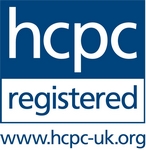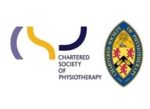Your Condition: Your Treatment
Foot and Ankle Pain
Your guide to different foot and ankle conditions.
Please 'click' the name of the condition or treatment to reveal more information
Overview of conditions
Foot and ankle pain is common and given the number of joints, ligaments and tendons that make up our feet, diagnosis can be complex.
High Impact
As the first part of our body to impact on the ground, the feet and ankles need to adsorb high levels of mechanical compression. The bone structure resembles that of an arched bridge; as the load increases the arch lowers and as a result part of the strain is taken up by ligaments which are now put under stretch.
Ligaments under strain
If the ligaments weaken, the arch drops too low and joints as well as tendons begin to suffer. Long term strain leads to degeneration and tissue inflammation. If the inflamed tissue is correctly identified then guided injections can assist.
Importance of footwear
Foot wear to aid support to the foot and ankle is essential in managing the condition and exercise to improve flexibility, strength and balance all help re-build best health and minimise pain.
Please 'click' on the specific conditions to find out more detail on your condition. If you are unsure as the nature of your problem, please book an appointment for examination and ultrasound scan.
Plantar Fasciitis (Heel Pain)
The unavoidable pain
Pain arising from the heel is quite common and very debilitating. Often a person feels their pain after rest or when visiting the bathroom first thing in the morning. Prolonged walking is out of the question and exercises like running are impossible to do without paying the price later.
The Plantar Tissue
The Plantar aponeurosis is a connective tissue that passes from the heel bone to the toes. When we stand this tissue is stretched and it helps maintain the foot arch.
Like most conditions, if the strain on the tissue becomes too much it will be become irritated and inflamed.
Ultrasound scan diagnosis
Ultrasound scans are a very efficient way to accurately diagnose this problem. Once identified injections are very successful in minimising pain.
Plantar Fasciitis Treatment
Essential
Treatment for Plantar fasciitis must included the use of cushioned insoles and rest. It will not recovery if the tissue is constantly being aggravated.
Injection therapy
The addition of guided cortico-steroids works when administered under guidance. Accuracy is critical otherwise more damage can be done and the injection itself can be painful.
When footwear, rest, gentle mobilisation and injection are administered together the results are better. Full resolve however still takes months as connective tissue is slow to recover even when managed correctly. Patience is required.
Ankle Joint Osteoarthritis
Degeneration of the ankle joint
Osteoarthritis of the ankle joint is not as common as the OA hip or knee, but as a weight bearing joint it often causes a severe pain and pronounced limp.
The joint often appears enlarged and misshapen. Fluid within the joint is also common.
Diagnosis
Ultrasound scan and clinical examination can confirm this diagnosis, but an x-ray will truly quantify the overall level of joint degeneration.
There can be times when the ankle joint is swollen but this is not because of OA changes.
Damage to the joint can affect the chondral surface; this is damage not OA.
Fluid retention also causes enalrgement around the ankle joint as will a mild ligament sprain.
This is why a diagnosis is not based on one single finding. Visit the section 'what to expect' to gain a insight into the examination process.
Ankle OA Treatment
Supportive footwear is essential
The management of a degenerative ankle is long term and therefore cushioned soled shoes with an ankle support is an essential part of the treatment plan.
Injection therapy
The addition of guided cortico-steroids works well when the person is suffering with an inflammatory flare up.
As with all injections this should be administered under guidance as there are nerves and blood vessels that pass over the joint. It is better if these are avoided.
Ankle Exercises
Keeping the joint moving and helping to strengthen the supporting muscles is a key factor in best management.
Guidance on simple exercises can be found on the QuickPhys website. 'Click here' for videos of ankle joint exercises.
Surgery
Surgery is part of best management when the joint has significant erosion and continual pain / immobility affects the persons quality of life.
There are two main surgical procedures; joint fusion and joint replacement. The fusion of the ankle joint involves a metal pin being inserted through the joint. Once the joint has been fixed there is no more movement.
Ankle joint replacements are metal joints which do permit some range of movement but are more complicated to fit.
A surgeon would discuss which one solution is the best for your specific problem.
Mortons Neuroma
Nerve irritation in the foot
Mortons neuroma is the irritation of the nerve tissue. There are two nerves that lay side by side between the 4th and 3rd toes.
If the base of the toe joints becomes compressed then these nerves get squashed.
Symptoms are very painful but also tend to be intermittent; the pain comes and goes and the intensity varies.
Diagnosis
Diagnosis is achieved by a series of test. If direct pressure between the 3rd and 4th toes increases pain and compression across the base of the toes causes pain then it must be considered as part of a potential diagnosis.
Sometimes there is a 'click' when the compression is applied.
Ultrasound scan occasionally allows for the observation of an enlarged nerve tissue (neuroma), however the key diagnosis arises from administering an injection.
If symptoms ease following injection then the diagnosis becomes more likely.
Morton Neuroma Treatment
Injection: diagnostic and treatment
The diagnosis and treatment of a Mortons Neuroma is often achieved via injection. The long term resolve of the condition further relies on footwear, insoles and activity.
The importance of footwear
If a persons shoes are too narrow then the compression will persist.
Sometimes bony changes have occurred and the use of insoles with a metatarsal pad can help separate the joints and create more space for the nerves.
Surgery
Surgery is a consideration if symptoms fail to settle with injection, rest and footwear changes.
New Patient Appointments
Examination
and
Ultrasound Scan
£90


